Save the Royal, police, Seal's home for sale (2 July 2025)
An urgent campaign to save a survivor of Plymouth's blitz, a round-up of police station news and word that Mervyn Seal's self-built home is for sale. Or is it?
I’d intended to write up my notes of the walk around Saltash this week, but then something came in which is time-sensitive. So the walk will have to wait.
I grew up in a place without a dedicated cinema building. In summer the town hall would show double-bills of kids movies. When we moved to Devon, the nearest cinemas were in Exeter, so I have fond memories of both the ODEON and the now-demolished ABC. When a small local chain opened in our town, I got a job in it. That led me to studying the history of art, design and film. And that has eventually led to me starting this project. Films and cinemas are in my bones.
Saving the Royal cinema
Back before the war, my mum and her sisters would queue around the block at the Plymouth Royal. This Art Deco purpose built cinema survived both the Blitz and the Abercrombie plan, but is now under threat of demolition.
It was designed by William Riddle Glen, the in-house architect of the Associated British Cinemas (ABC). Of the 75 cinemas Glen designed, only three were in the west country: the Royal (Plymouth), the Regal (Torquay) and the Savoy (Exeter). both the Regal and the Savoy have already been demolished.
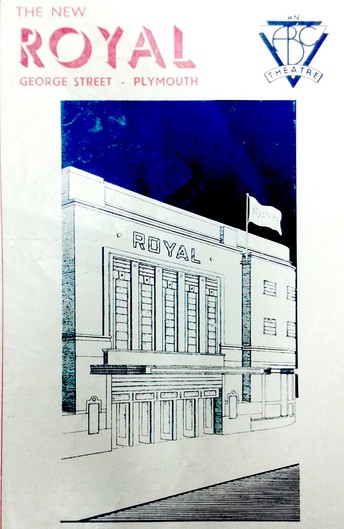
Originally a one-screen cinema, The Royal has been split into three, done time as a Gala bingo and is currently dark. It’s now known as the Reel after the cinema chain that operated it until 2019. The Reel has been approached by a developer with plans to demolish it and replace it with flats.
The Plymouth Royal Cinema Community Benefit Society was set up was set up when a previous development plan was floating about. It’s registered the building as a community asset, which means its now been offered the chance to make a counter offer by the start of September. The society want to set it up as a central, mid-size arts and music venue for the city.
This fits with Plymouth’s cultural plan which sees the Royal as part of a performance quarter alongside the nearby brutalist Theatre Royal and the midcentury Atheneum. There are plenty of brownfield sites for housing, along with creative plans for how to convert dormant office blocks into apartments. That makes it seem unnecessary to destroy a decent old ABC venue for flats. Along with its neighbours it tells the story of the arts in Plymouth, and its regeneration.
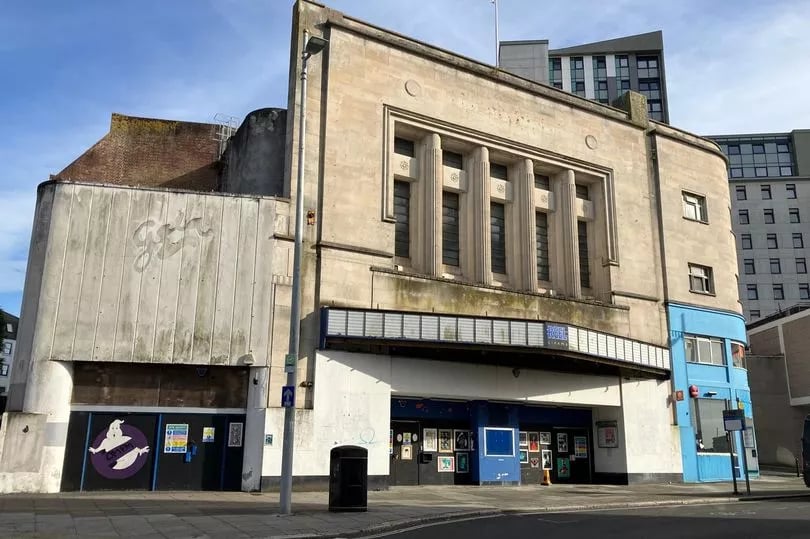
You can read more about the campaign to save the Royal on the Plymouth Live site. The group is very active on their Facebook Save the Royal page (lovely to see the much missed Exeter ABC mentioned). If you can offer expertise on their immediate need to get a bid together by September, you can email plymouthroyal@hotmail.com to get in touch with the team.
In case you missed it, I’ve just written about another community group hoping to buy a cultural hub. That’s as part of my deep dive into the Amulet in Shepton Mallet (£).
I’ve already contacted the Save the Royal team with contact details for the Buy the Amulet team.
And the Royal, under its guise as the Reel, featured in last week’s notes about 1930s survivors in Plymouth City Centre.
Survey
I’m running a short survey for all subscribers, to make sure I’m putting time into things people actually want. If you’ve not already done it, you can take part below. Ta!
Tha’s the sound a’ tha’ police
What’s all this then? Three stories this week involve the future of police stations in the west country. Two are decommissioned sites, and the third is a new station in a 1960s building.
Heavitree Road police station and magistrates court, Exeter
Revised plans are in for the former Exeter City Police Station and Magistrates Court on Heavitree Road in Exeter. This complex was built between 1952 and 1959 on what had been a bombsite (Source: 2025 Heritage Impact Statement). The building doesn’t appear in Hoyos-Saavedra’s Discovering Exeter 11: Twentieth Century Architecture, and there’s no note of an architect on Exeter Memories either.
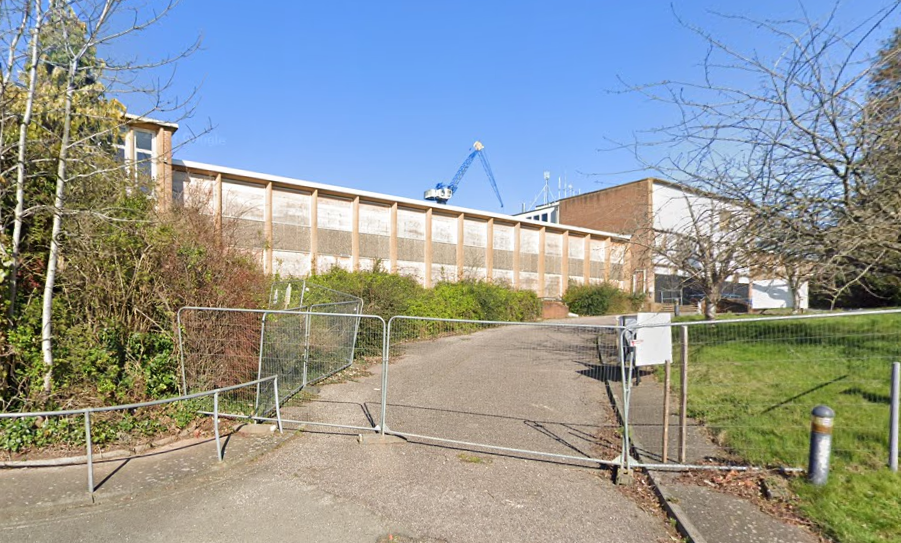
It would have been built for Exeter City Police, who were amalgamated into Devon and Cornwall within ten years. In the 1960s, the simple 2- and 3-storey 1950s offices had to be expanded with an aggressively ugly 1960s 5-storey block that still looks like a heap of portacabins have been stacked up.
The site has been redundant since the magistrates court moved out, and the police station moved to the police HQ site at Middlemoor. The boarded up building was investigated by urban explorers who discovered the police had left behind confidential details of an investigation into a death. So obviously the urban explorers were arrested.
The new plan is still for co-living student accommodation, which makes sense given the university’s St Luke’s campus is literally over the road. As the building is very generic, and the 1960s
More details on the Exeter City Council planning portal - ref 25/0676/FUL.
Townsend Road police station and magistrates court, Minehead
If you have at least £550,000 then you could buy the former police station and magistrate’s court in Minehead, Somerset. It’s up for auction on 23 July.
As with Exeter, the site combined the police station with cells and the local magistrates. A one-stop shop where people could be arrested, held and then taken to a hearing.
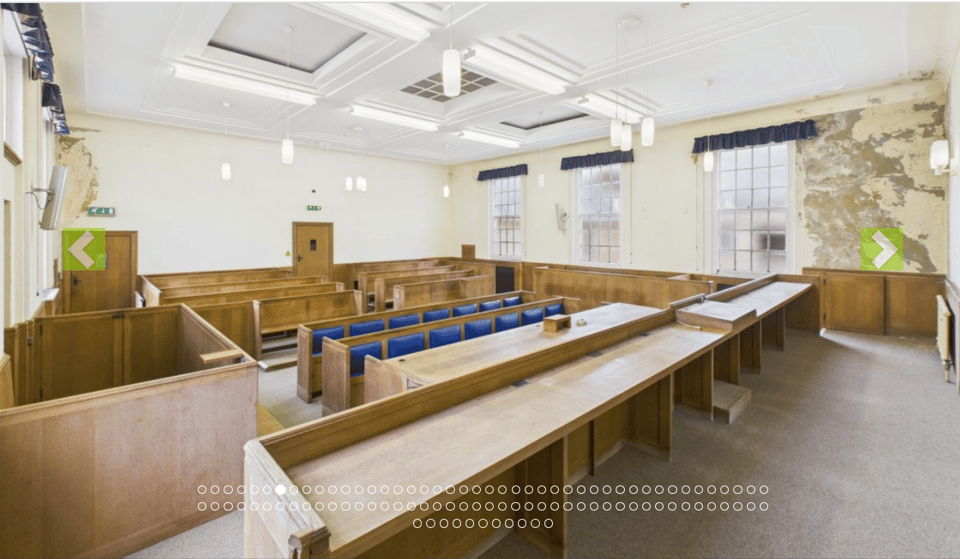
This one was built in 1936 by the County Architect, Major AJ Toomer. (Source: Heritage Gateway) Lots of the interior is intact, so if you want a magistrate’s court to perform Christie’s Witness for the Prosecution, then this works for you. If whoever buys it does demolish it, hopefully they’ll get the salvagers in first.
The full auction listing is on the Hollis Morgan website.
Monmouth Street telephone exchange, Bath
Over in Bath, the Avon and Somerset Police are converting an old telephone exchange into a new police station. Plymouth House on Monmouth Street was built in the 1960s as the first part of the Kingsmead telephone exchange. It was commissioned by the Ministry of Public Building and Works, and there’s no note of a named architect in the Heritage Impact Statement. (Source: 2024 Heritage Impact Assessment, or see planning application 24/04511/FUL on the BNES planning portal)
The Bath City Centre Conservation Area Plan describes the building, on a former bombsite, as ‘unbelievably perverse’.
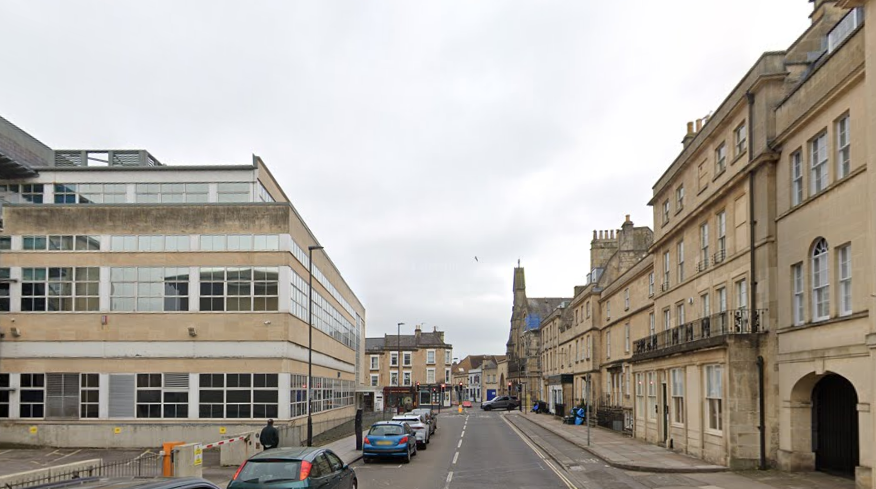
Their use of quotemarks and the tone of the phrase make me suspect this is from Pevsner. The 1960s building is clad in bath stone, and it’s roof line matches that of the surviving Georgian buildings opposite. But it also has that hallmark of the modern: long ribbon windows. It’s this that makes it seem out of scale compared to the smaller windows in the Georgian terrace.
Retrofitting a nondescript midcentury building like Plymouth House for reuse is far better than demolishing it and building anew. It’s both more environmentally and economically sensible to conserve sound structures.
If you get the sense I love both online planning portals and Heritage Impact Assessments, you’d be right. I managed to write all of that and not do one Hot Fuzz reference though.
Enjoying this? You can upgrade to a paying sub to support me in producing the newsletter.
Other local news of C20th buildings
In which I fight my way through local ad-laden news sites to find stories about twentieth century buildings and related topics.
Seaside Heritage Network bucket list nominations
Every year the Seaside Heritage Network produce a bucket list, with the public voting for their favourite from ten nominations. The 2025 nominations are now open, and include Weston’s 1935 Plaza cinema.
View the full list and cast your vote on the Seaside Heritage Network’s website.
I love this list, despite it daring to also love non-West Country seasides like Skeggy and Scarborough. Aside from anything else, their bucket list always includes at least one (working) cliffside railway.
Mervyn Seal house for sale in Kingswear
Kaywana Hall in Kingswear, Devon, is up for sale. This is one of Mervyn Seal’s iconic ‘butterfly’ houses. It was built in the early 1960s, by the architect for himself according to this description of a C20 SW tour.
Stan Bolt, a regional RIBA winning architect, did what the estate agent is calling “extensive reconstruction” for the owners between 2005 and 2009. And what that means is they knocked the entire building down and rebuilt it to Seal’s plan.
You can have a nosy around on the estate agent’s website.

Kaywana Hall, Kingswear, Devon - The Coastal House Estate Agents, South Devon property for sale, coastal and waterside
An Iconic Contemporary Country Home Set In 12 Acres Of Lush Woodland In The Picturesque Village Of Kingswear, Dartmouth
Or there is this quite stunning collection of photographs on Pinterest showing it as Seal’s family home. He self-built it for £6,000, to put the current asking price of £3.5million into context.
If you know of an event or news item you think I should know about, you can contact me on Bluesky.

If you’re enjoying this newsletter, feel free to share it with others.
If someone has sent you this, you can subscribe below.
A free sub will get you the weekly field notes and notice that a deep dive has been published.
A paid sub (£3 a month) will unlock the deep dives early, plus occasional bonus content and the warm knowledge that you’re supporting the project.